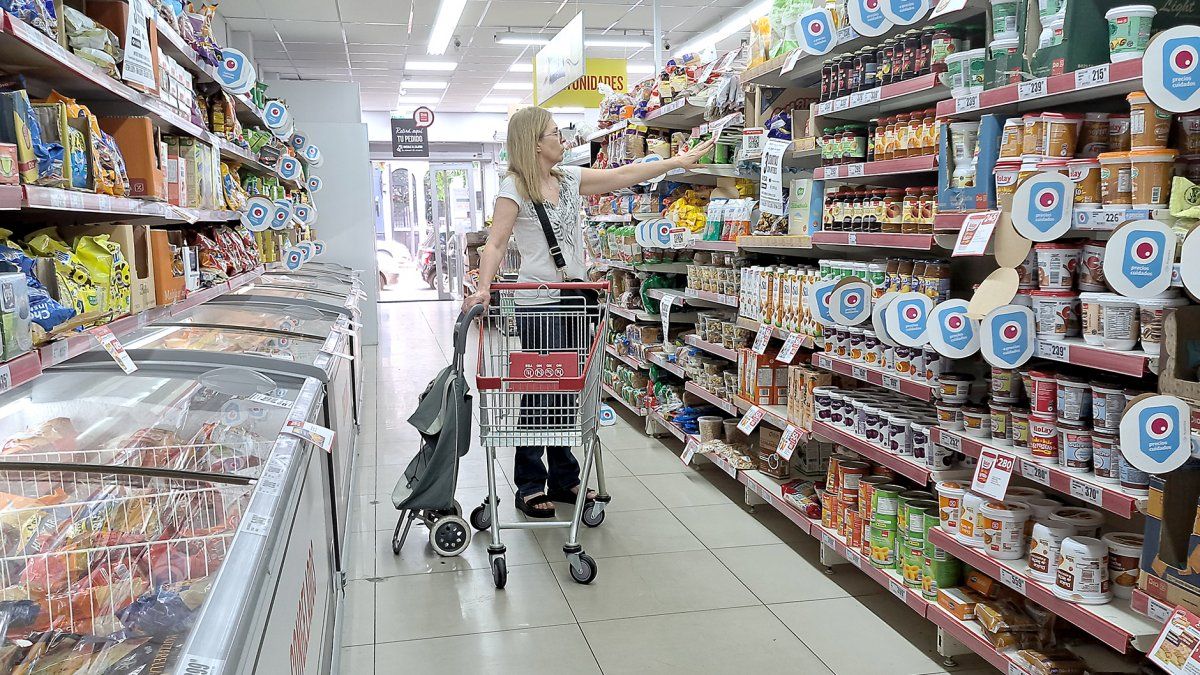The adjustments of different regulated prices, the volatility in the alternative exchange rates and the impact that the drought may have for agriculture are some of the causes that may threaten the slowdown of the CPI in the coming months. In fact, according to the Survey of Market Expectations (REM) carried out by the Central Bank, the inflation forecast for December 2023 is 99.7% year-on-year.
In fact, it is estimated that, after the slowdown in November (4.9%), inflation will increase again both in December and in the first months of this year. “For the first quarter of 2023, we project that the Retail Price Index will return to monthly variations of the order of 6%, reflecting the underlying monetary and fiscal fundamentals. To which will be added adjustments in regulated prices that are late; remembering that the removal of tariff subsidies will be accelerated and, in addition, the increase in transport. With this, during the first months of next year the 100% rise barrier of the general CPI would be crossed”, said Eugenio Marí, Chief Economist of the Libertad y Progreso Foundation, to Ámbito.
“The inflation floor in 2023 is at 100% per year,” said economist Jorge Neyro, who detailed: “Inflationary pressures, derived from regulated price increases, the probable acceleration of meat prices after many months of great stability, the monetary issue that is pushing the financial dollars and, also, the question of a certain increase in public spending before the elections, added to the great drought that will probably reduce the supply of dollars next year, all this generates pressures that will keep inflation high, at least 100%”.
In this sense, Neyro argued that it is difficult for any measure by the Government to change this course: “Avoiding levels like this year is almost out of the reach of the Government, except for some temporary success that the Fair Prices program is having and some freezing. But the prepaid are going to be indexed to inflation or salary increases; the buses and metropolitan trains, too; parities in themselves are above 100% in many sectors. All this is going to continue pushing inflation, there is no possibility of inflation falling below 100% in the long term”.
A path similar to 2022
“In principle, inflation could calmly follow a path like this year,” said Martín Kalos, director of EPyCA Consultores, who explained: “In an optimistic scenario, I would believe that it could slow down month by month, very gradually. But that does not exempt from having fluctuations, for example, linked to movements in parallel dollars or new measures that can be taken around exchange controls or even price agreements. So the policy, which is still uncertain for next year, is key to knowing what the final course will be”.
“But today, assuming no change from the current situation, one could expect a very gradual slowdown. And that, then, the inflation rate accumulated in the year drops a little compared to this year, but it would remain at higher levels than compared to previous years. And that marks the fragility of the issue, because in the face of any unexpected shock, any episode of crisis, it may happen that there is a nominal acceleration again, that it equals this year or that it also exceeds it,” Kalos said.
And this year there are various sources that can generate volatility in the economy. The main one is the presidential election. “That is going to be the great seasoning. In between, of course, there are geopolitical risks at the international level (for example with the price of oil); we must follow the issue of public service rates, which is one of the key components and has been falling behind year by year; you have to follow the price of the official dollar, which has been lagging behind the rest of the prices; We must also follow the issue of salaries, which have been falling behind since 2016, almost uninterruptedly, and in the context of an election year the Government will surely want to give some kind of boost to family income”, analyzed the director of EPyCA Consultores. .
“That is, there is a lot of policy uncertainty and there is a baseline scenario that may be subdued compared to the 2022 scenario, but is still generally not auspicious,” Kalos concluded.
Finally, Martín Calveira, a research economist at the IAE Business School, stated that in recent months “the monthly inflationary dynamics have shown a decline, after holding above 6% since March, evidencing the temporary effects of price regulation and control.” . “In effect, the temporality of the effects is assumed to be short-term given the imbalances in the monetary and exchange markets,” he highlighted.
“Similar inflation is expected for next year, at least in the first quarter and despite the insistence on price controls and agreements in a macroeconomy with sustainable imbalances. In the absence of a comprehensive stabilization and growth program, the price dynamics will persist in a similar way,” Calveira stressed.
Source: Ambito
David William is a talented author who has made a name for himself in the world of writing. He is a professional author who writes on a wide range of topics, from general interest to opinion news. David is currently working as a writer at 24 hours worlds where he brings his unique perspective and in-depth research to his articles, making them both informative and engaging.




